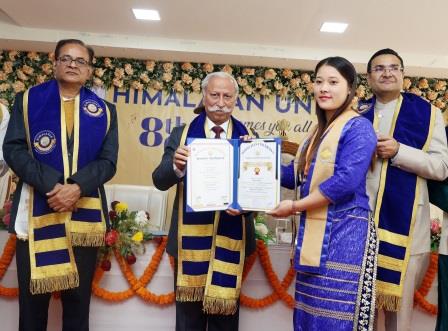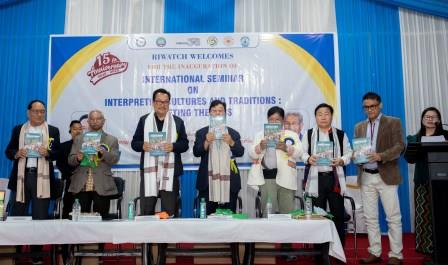-
SEC announces peaceful completion of vote counting in local body…
-
.jpg) BJP Arunachal Pradesh celebrates victory in local body elections
BJP Arunachal Pradesh celebrates victory in local body elections
-
.jpg) Governor interacts with NCC Cadets at training camp
Governor interacts with NCC Cadets at training camp
-
.jpg) National bodybuilding and fitness championship underway in Lower Siang
National bodybuilding and fitness championship underway in Lower Siang
-
BJP sweeps IMC elections; PPA aces PMC polls
-
 Governor attends Himalayan University Convocation
Governor attends Himalayan University Convocation
-
 Book on Traditional Festivals of Arunachal Pradesh released
Book on Traditional Festivals of Arunachal Pradesh released
-
Workshop on GIS and Remote Sensing
-
‘Yogananda Bhavan’ inaugurated at Ramakrishna Mission Narottam Nagar
-
Arunachal to participate in 9th Federation Cup Wushu Championship
Managing traffic is one of the most emerging challenges that is confronting urban Arunachal today. It has been a constant headache for the twin capital cities of Itanagar and Naharlagun and now making its presence felt in most of the state’s district towns also. And to mitigate this ever-increasing problem, new blueprints are drawn, declared with much fanfare, get implemented, shows results for a few weeks or months, but then it’s back to square one again.
Although it may sound unbelievable, it is a fact that most cities of the developed world, including those dotting both sides of the Atlantic are also beleaguered with the same problem. Urban planners have racked their brains to find solutions, but no metropolis have achieved a ‘ total congestion-free’ tag as of now. For India, it is more severe since growth of most cities & towns, big or small had always treaded an unplanned path, with no anticipated plans for the future hassles. The country has the second largest road network in the world with a total stretch of more than 5.4 million km network and is also witnessing unprecedented urbanization and population rise. If highrises kissing the skyline are symbolic of the financial strength of a state or region, a glance down has always a different story to narrate. It’s a cocktail of traffic rules violations, heated altercations between traffic personnel and offenders, long hours of traffic jams and test of patience for all stuck in the melee. If time is money, it is really mind-boggling if one calculates how much time the nation wastes due to traffic blues. It is estimated that traffic congestion costs Rs 1.47 lakh crore per annum for India on an average. This is besides the associate negative health implications which manifests through the rise in blood pressure, tension, anxiety and those resulted due to prolonged pollution exposure.
Among the scores of views that try to explain this ‘point of no return’ situation, the most accepted one is the rise and rise of the middle-class population with solid purchasing power, nurturing the dream of possessing a vehicle, either two-wheeler of four-wheeler exerting huge pressure on the roads which are sadly showing little or no signs of increase. And the situation only aggravates when a huge percentage of industrial transport is still carried out through roads making it extremely tough to ensure the quality.
For Arunachal, the challenge is more tough since topography here is rough and maintaining the existing roads is as challenging as laying new ones. Only a multi-pronged approach with an amalgamation of technology driven futuristic solutions and wholehearted obligatory support of the citizens can usher some hope.
It’s a daily war, only to be fought by people and administration together.

Kenter Joya Riba
(Managing Editor)She is a graduate in Science with post graduation in Sociology from University of Pune. She has been in the media industry for nearly a decade. Before turning to print business, she has been associated with radio and television.
Email: kenterjoyaz@easternsentinel.in / editoreasternsentinel@gmail.com
Phone: 0360-2212313

